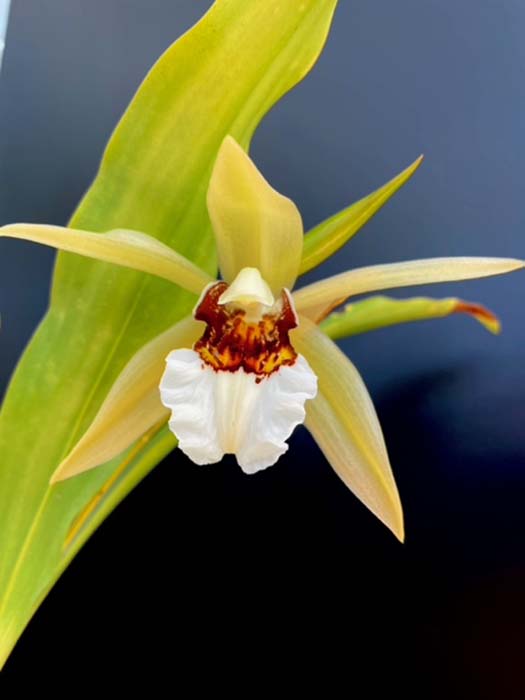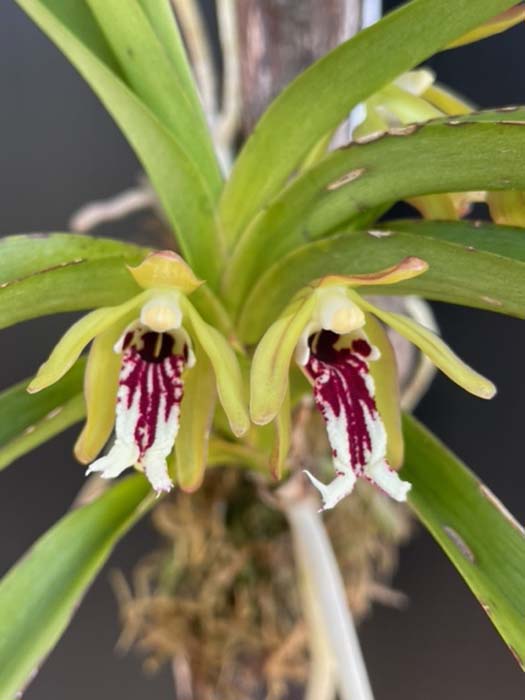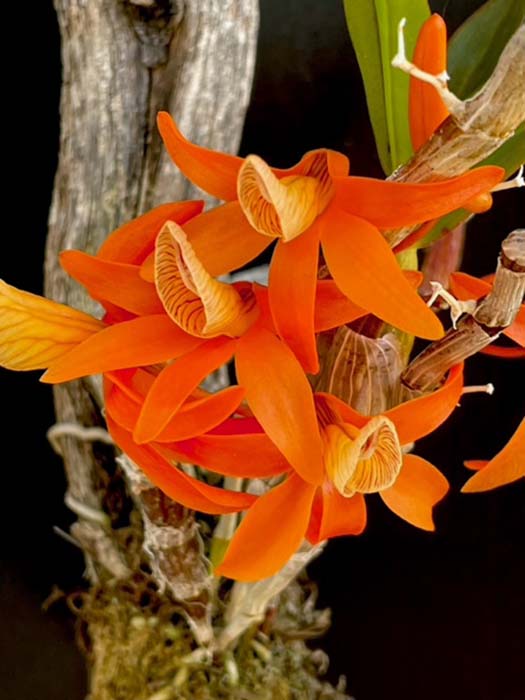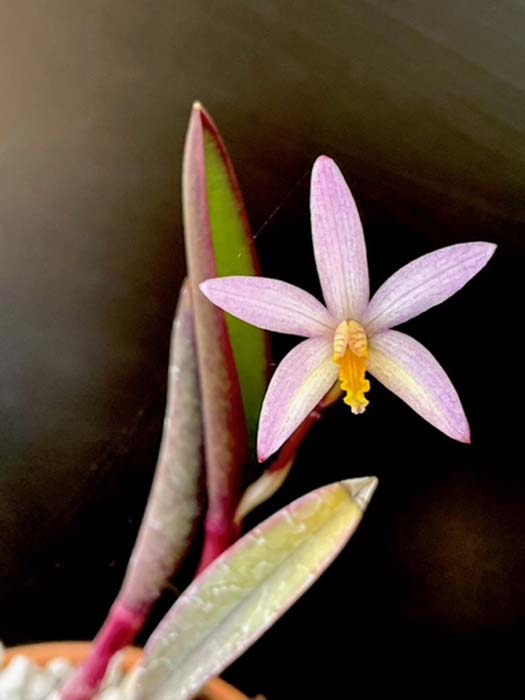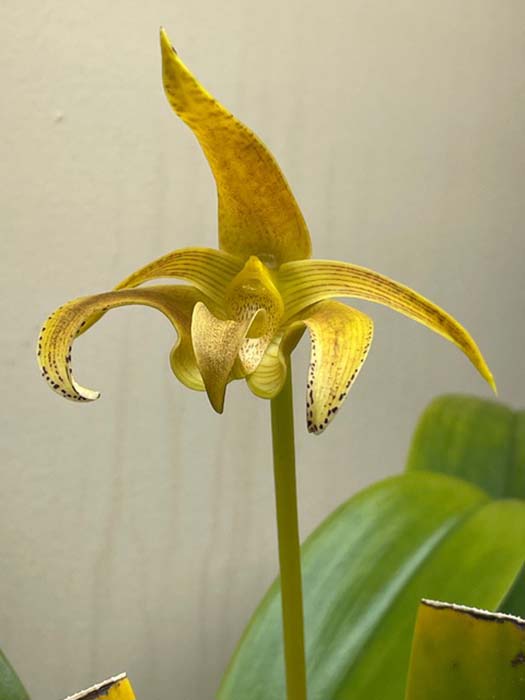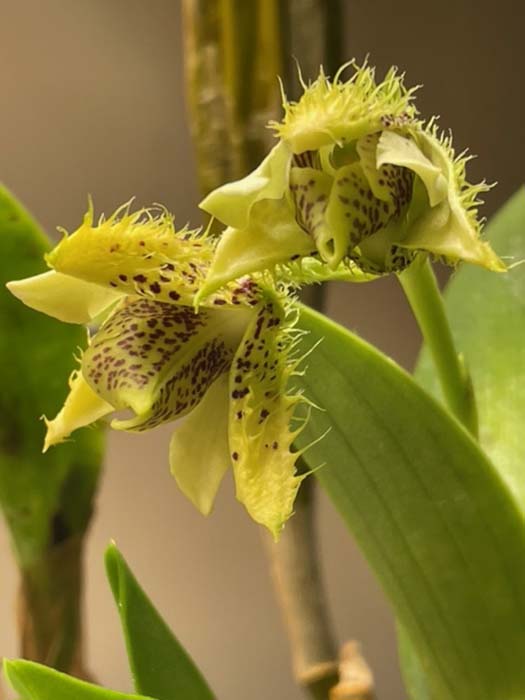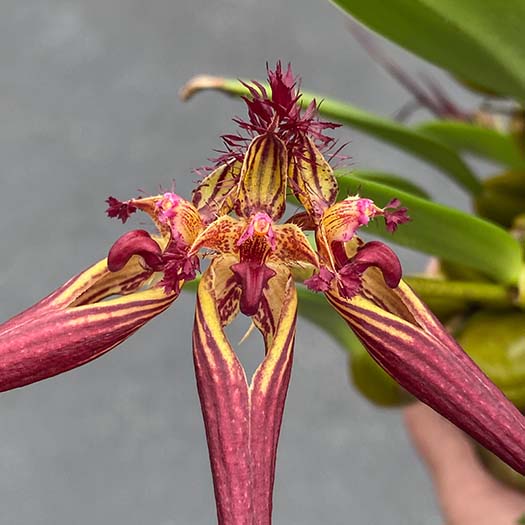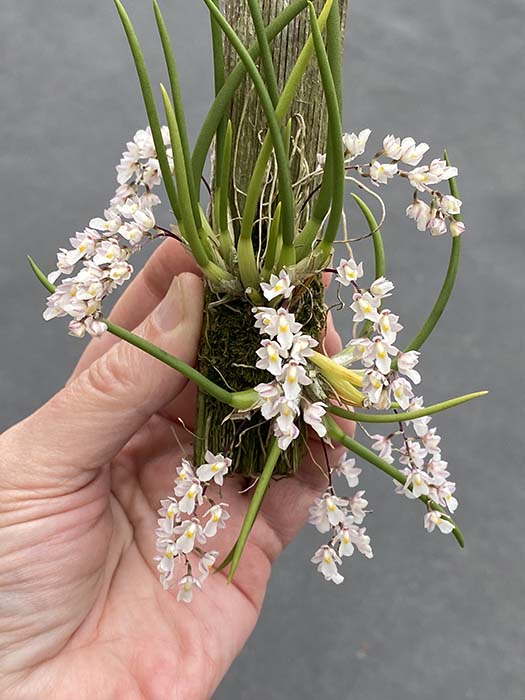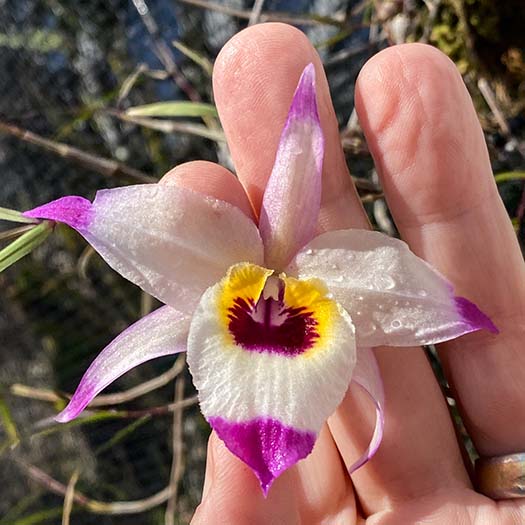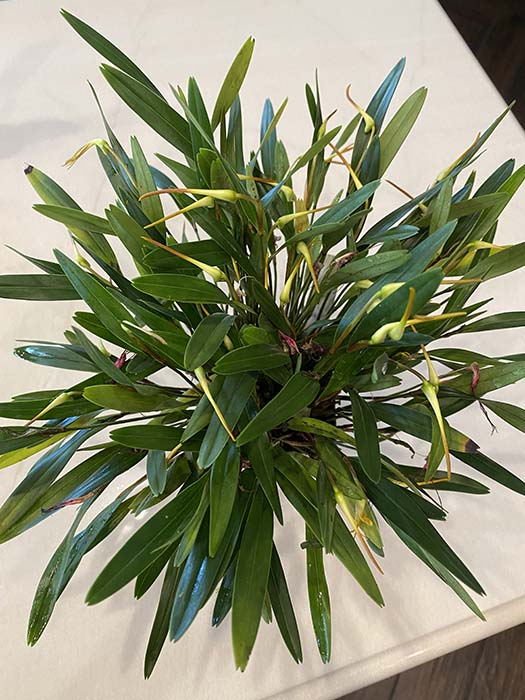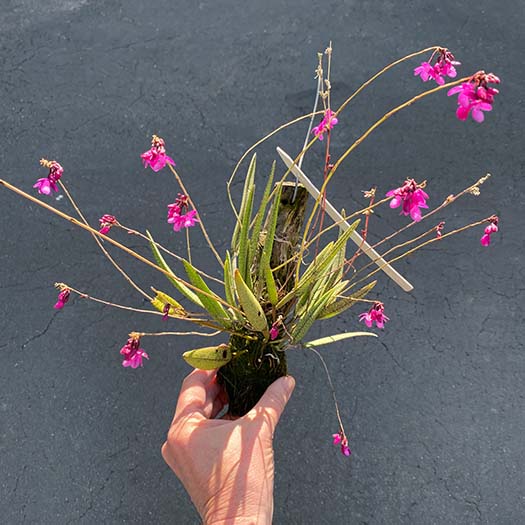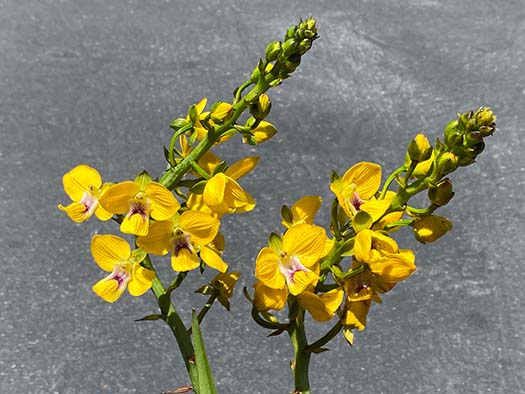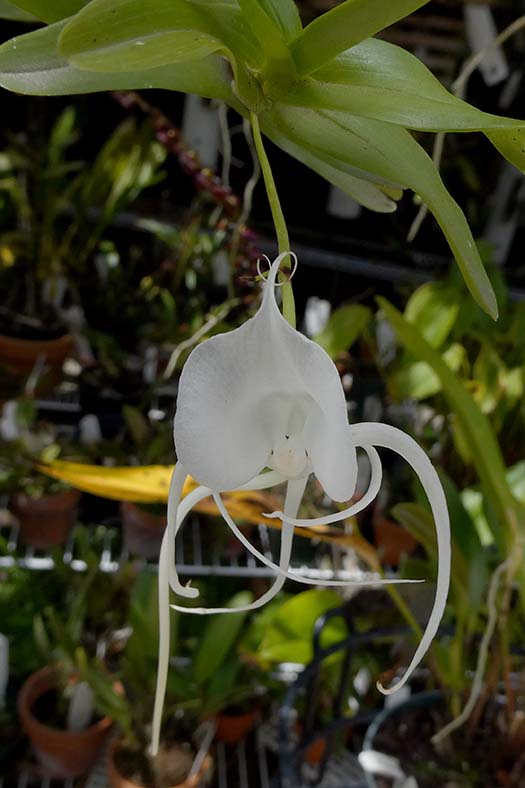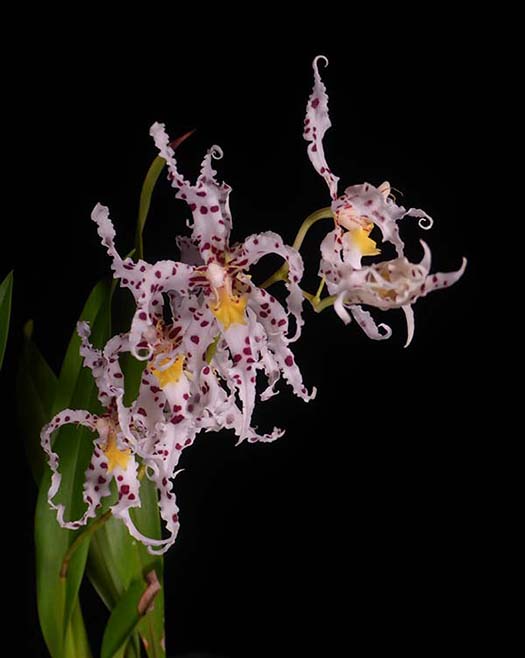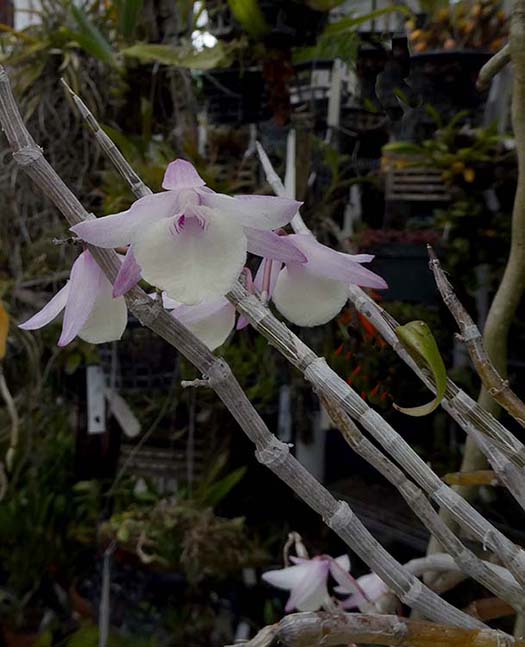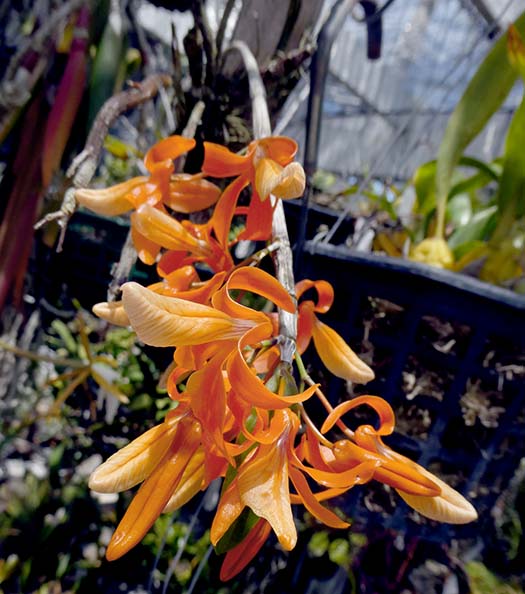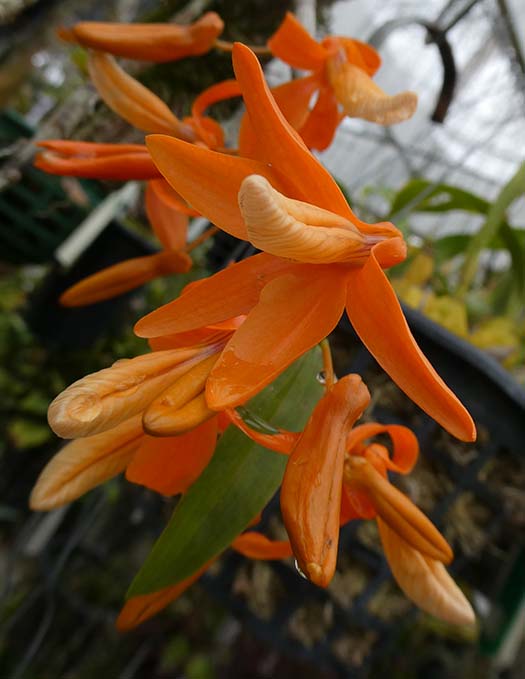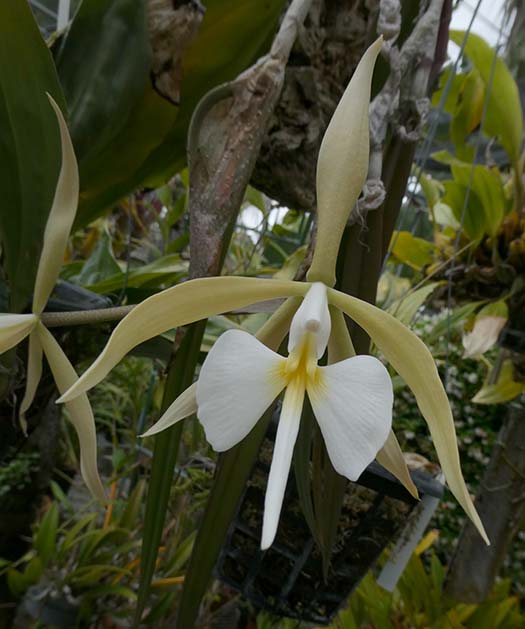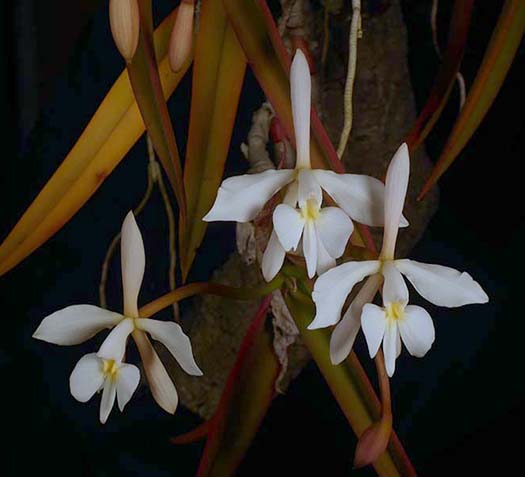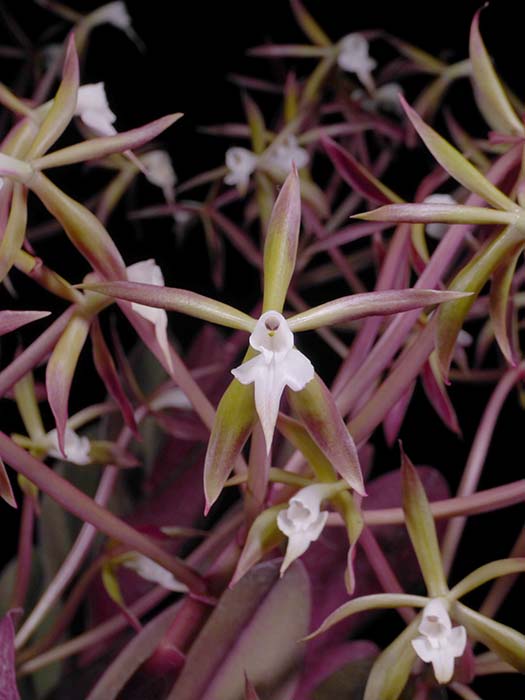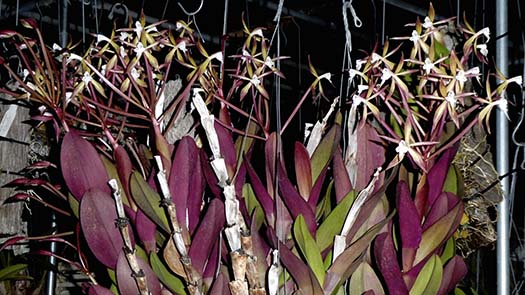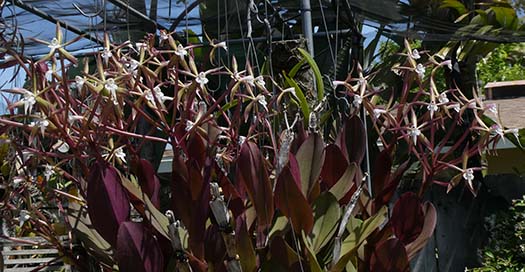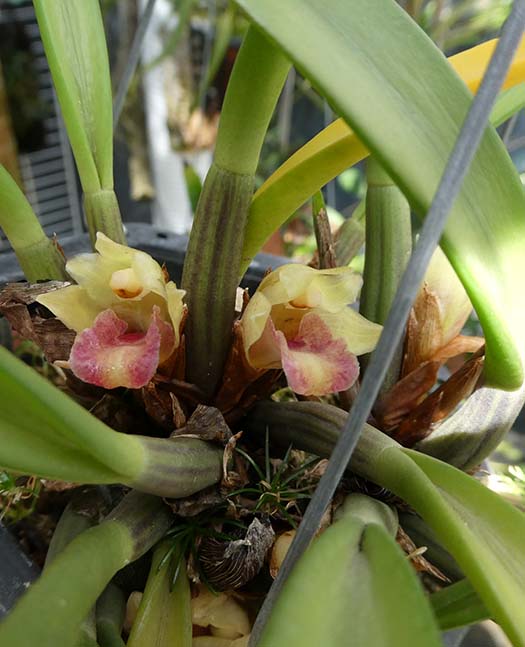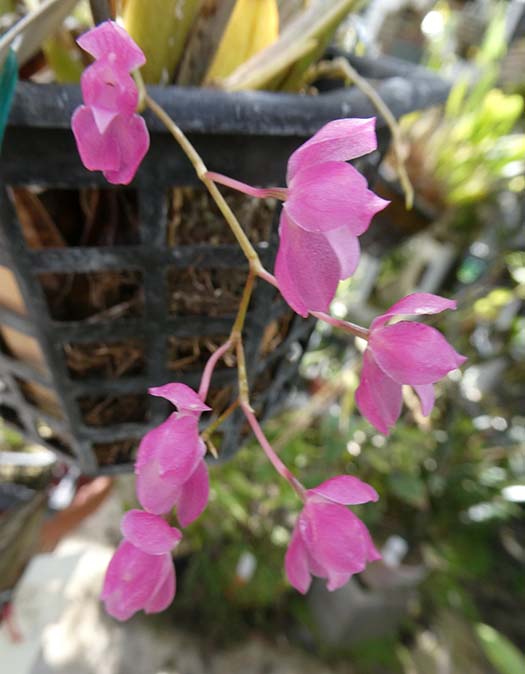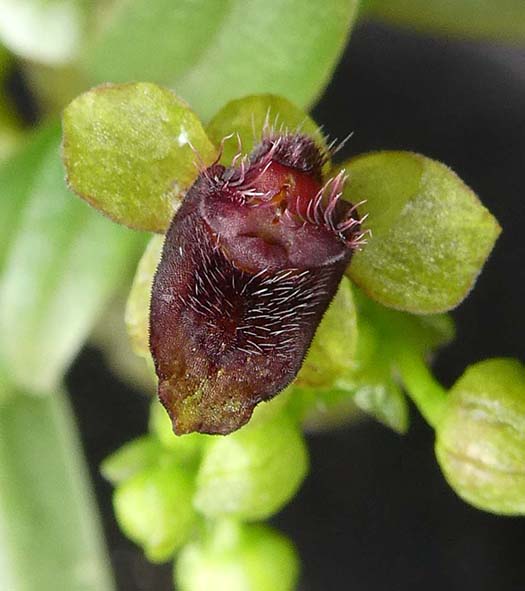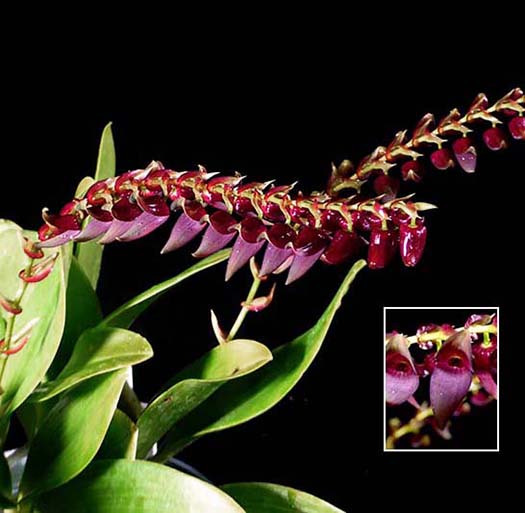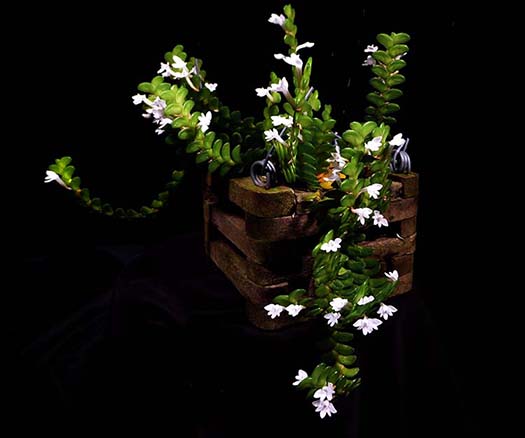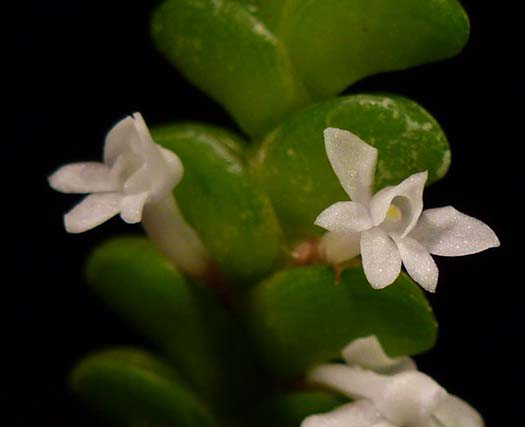June 2022
From Kurt Shanebeck:
|
|
Outdoors coastal, north of Los Angeles: |
|
Dendrobium chrysotoxumGrowing mounted with a drier winter rest. |
|
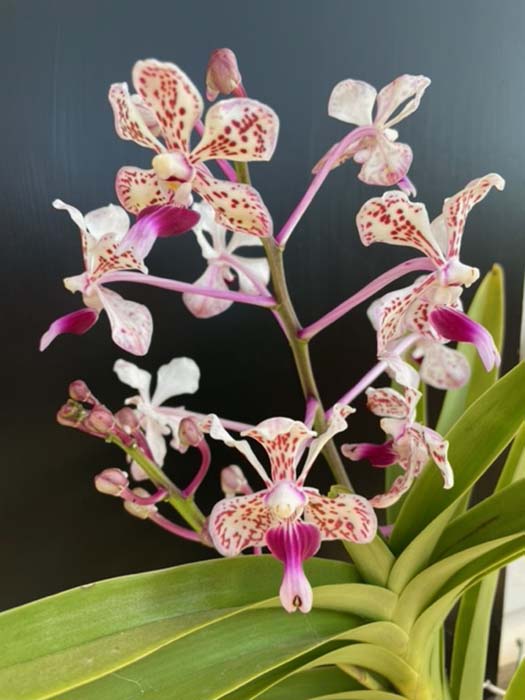
Vanda tricolorA larger plant native to the Philippines. I have it growing potted in a bark mix although many of the roots are no longer in the pot. Likes bright light and water a couple of times a week. |
|
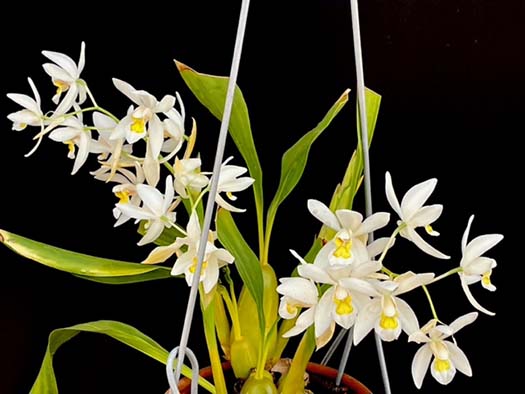
Coelogyne nitidaNative to India and Southeast Asia, I am growing it potted in a bark mix and water it about 4 times a week. |
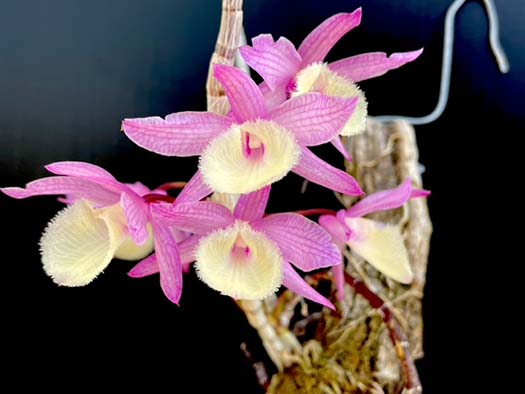
Dendrobium aphyllum ssp. latifoliumA semi-deciduous Dendrobium from the Himalayas. I have been giving it a drier winter rest. During the growing season it gets bright light and daily water. |
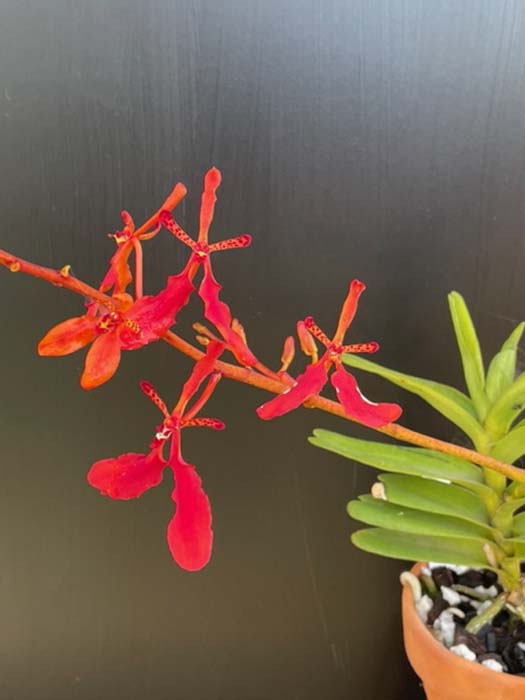
Renanthera imshootianaEpiphyte native to Southeast Asia. Sequentially blooming flowers. Growing potted in a bark mix, I have been giving it a drier winter rest-but I am not sure if it is required. I give it bright light and water 2-3 times a week in the growing season. |
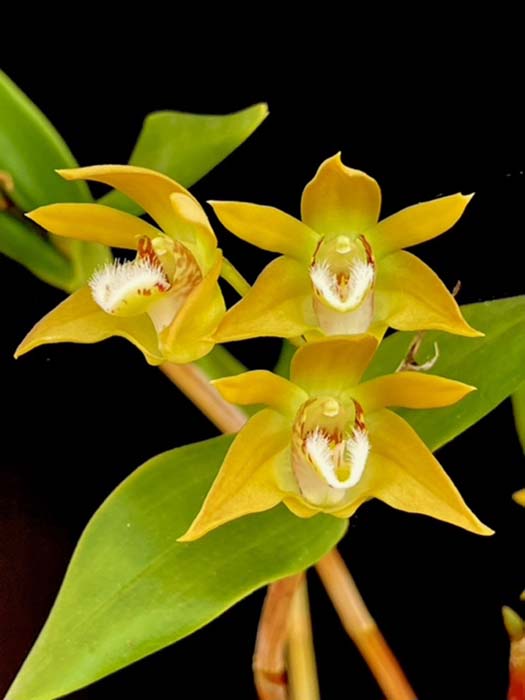
Dendrobium fleckeriNative to Australia—spindly pseudobulbs topped by a pair of leaves. Somewhat cuppy flowers with frilly lips emerge from the apical nodes. Growing potted in a bark mix-likes bright light and is watered 1-2 times a week. |
Indoors, Under Lights: |
|
From Scott McGregor:All orchids grown outdoors, coastal southern California |
|
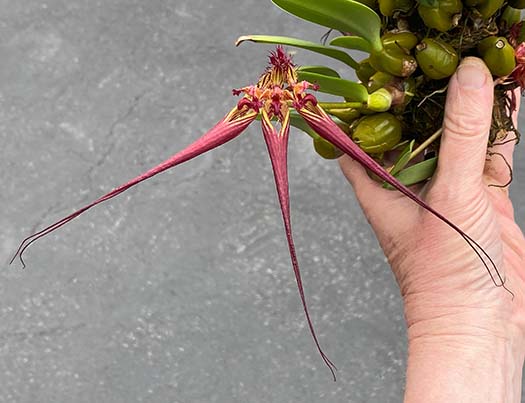
Bulbophyllum wendlandianumThis species isn’t fussy-- grows very well outdoors, staying compact on a mount, and blooming reliably. Pics are of one of almost a dozen spikes that open over the course of a couple months, each with 3-5 flowers. |
|
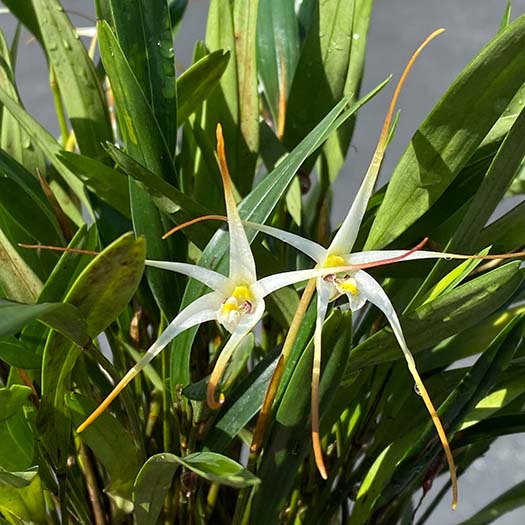
Diplocaulobium arachnoideumFlush blooms for a single day, but 3-4 times/year and the spidery white flowers are intensely scented of watermelon. (Ed. Don't blink or you may miss the blooming) |
|
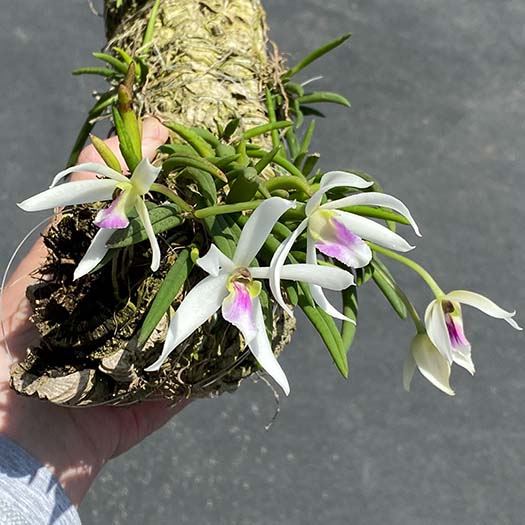
Leptotes bicolor 4nTwo plants, one typical and one 4N (doubled chromosomes). The 4N version is definitely nicer in all respects except quantity of flowers. Leptotes bicolor seed pods contain vanillin, and so can be fermented into mini vanilla pods, in case you always wanted to grow vanilla but don’t have the space or climate! |
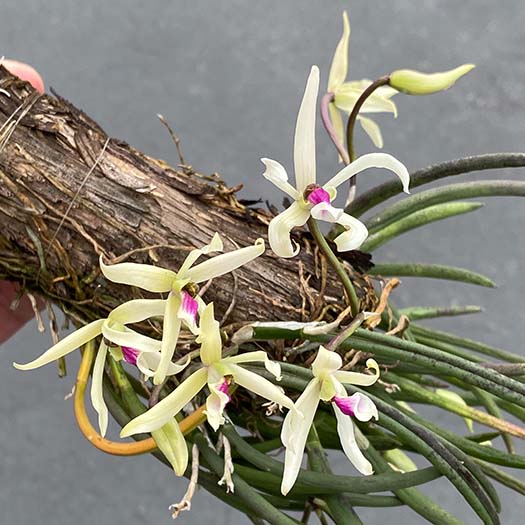 Leptotes bicolor typical |
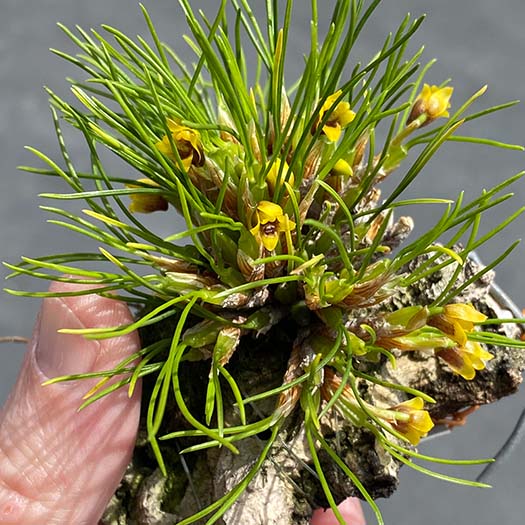 |
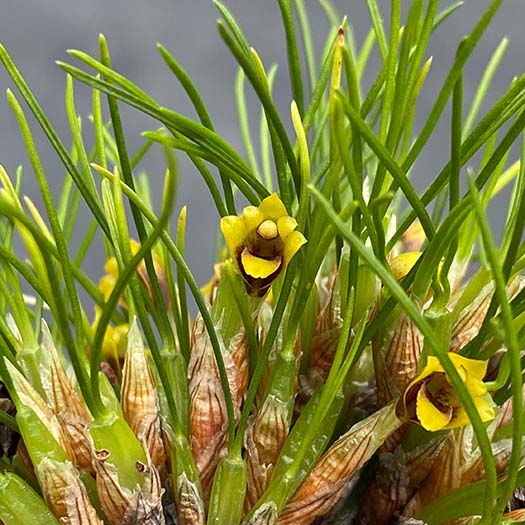 |
Maxillaria (Christensonella) vittelinifloraIf you like your mini’s really small… |
|
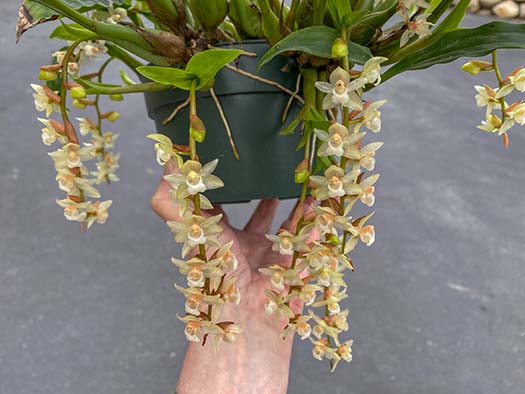
Pholidota chinensisFlowers open from the end of the spikes first. |
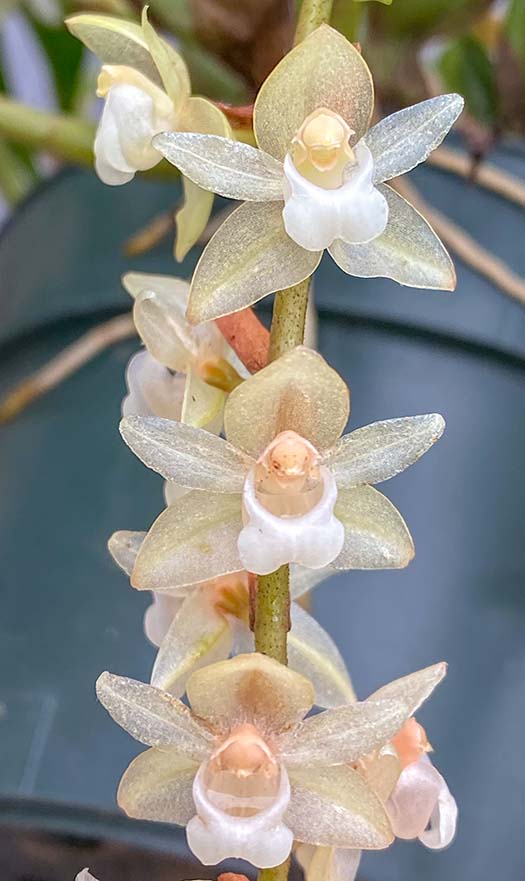 |
From Roberta Fox:
|
|
Outside in the Back Yard: |
|
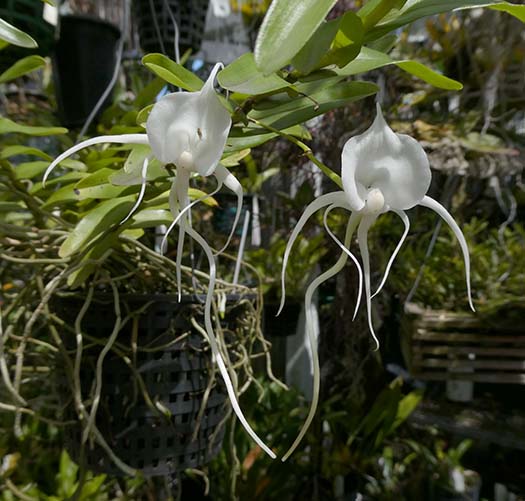 Angraecum germinyanumDelightful flowers, night-fragrant. It is in a 6 inch basket with sphaghnum, but much of the plant has extended itself well outside of the basket. Grown shady and damp. Native to Madagascar. |
|
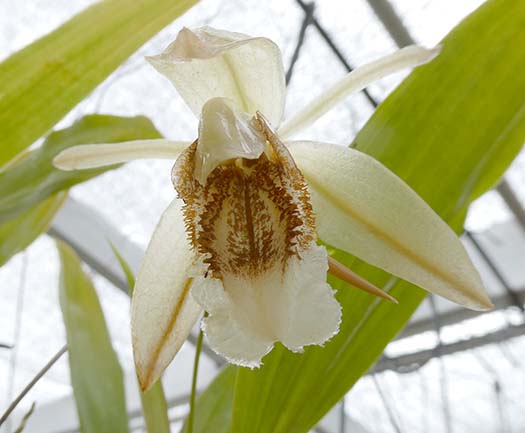
Coelogyne speciosaIt can bloom 2 or 3 times a year. The translucent flowers look very fragile, but actually have firm substance. This needs to grow in a basket, since flowers may emerge from nearly any direction. Native to Java and Sumatra, at elevations up to 1800 m. |
|
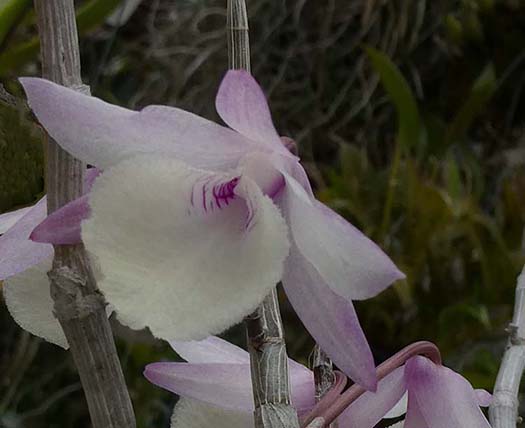
Dendrobium aphyllum ssp. latifolium
|
|
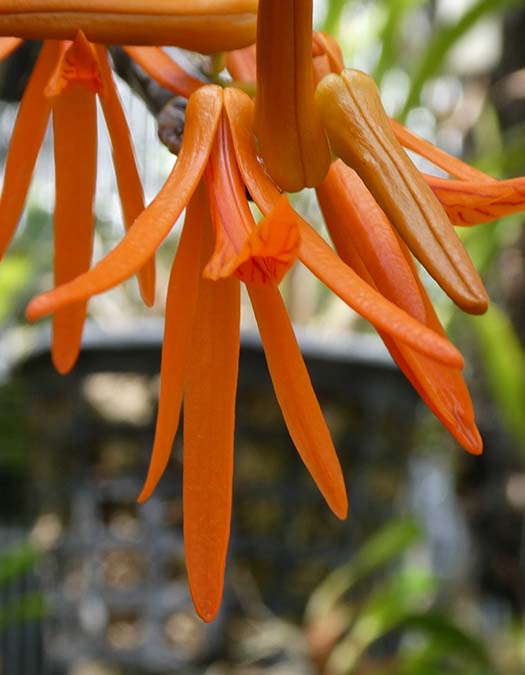
Dendrobium dickasoniiThis one is native to India, Thailand and Mynanmar. As with the others of this type, it blooms on bare canes from the previous year. |
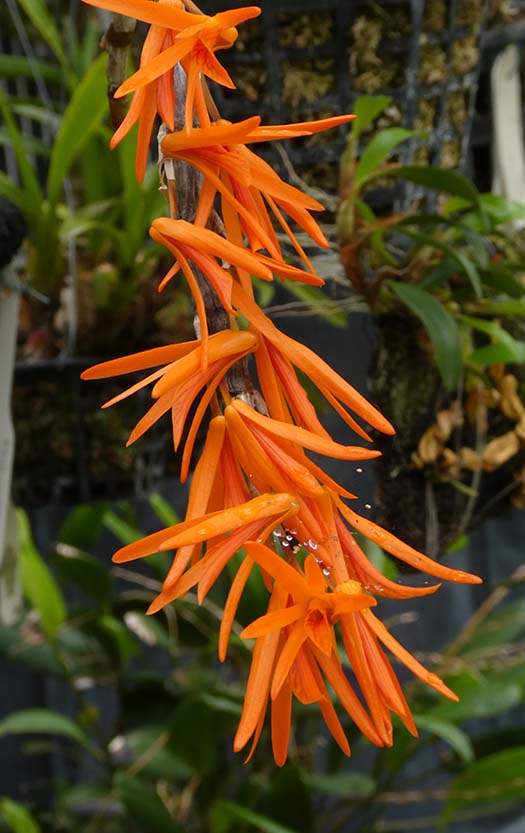 |
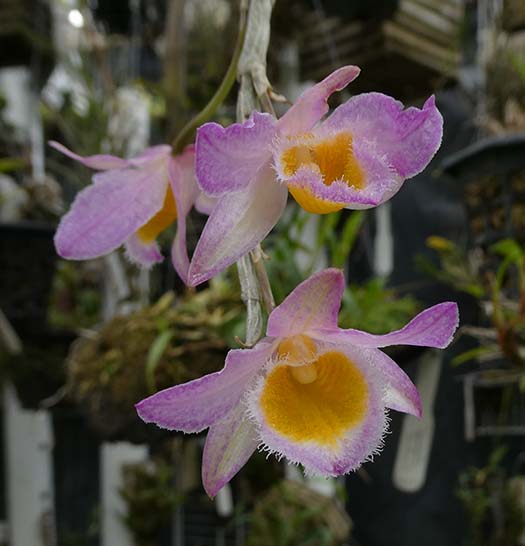
Dendrobium loddigesiiFrom a wide area of mountainous regions of southeast Asia and southwestern China. Some of the blooming canes look dead... clearly they aren't, don't cut anthing that isn't totally shriveled. |
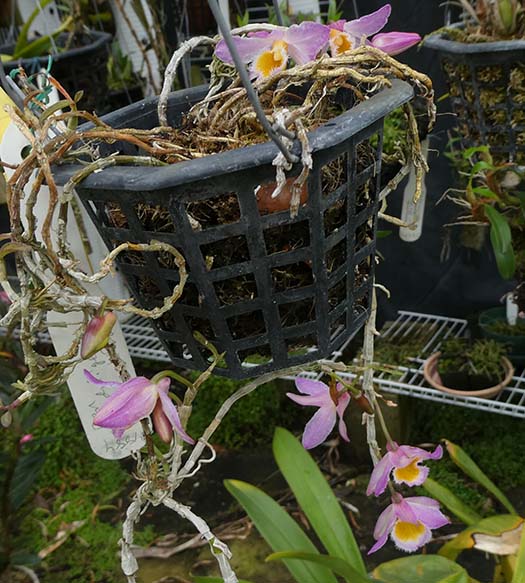 |
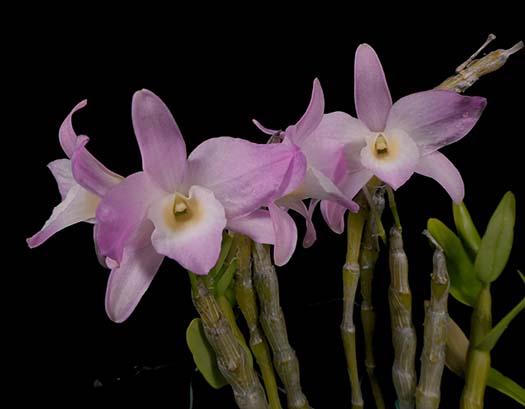
Dendrobium regiumNative to India. The delicate shading of the flowers contrasting with the yellow throat is particularly lovely. I got this as a small division a few years ago, and each year it gets bigger and better. |
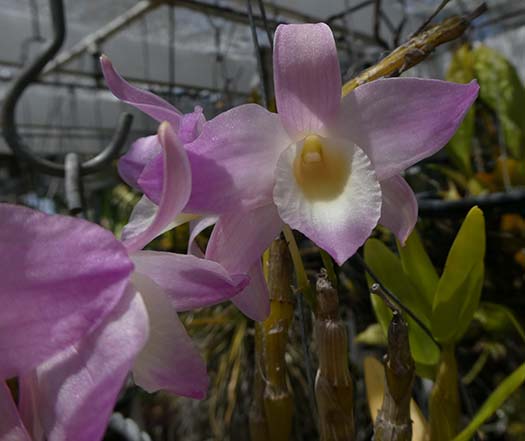 |
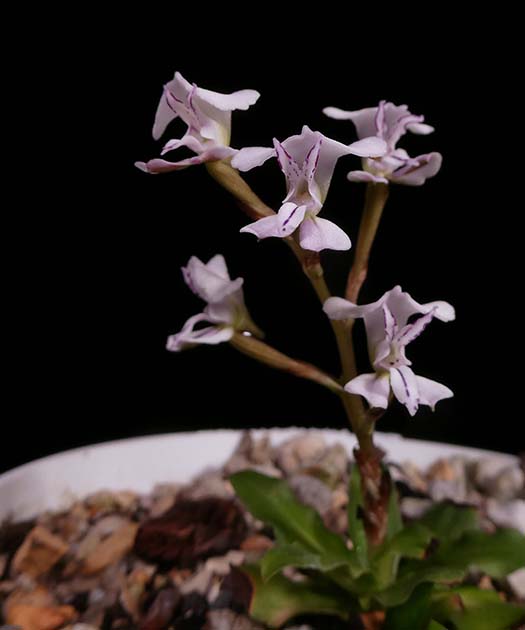
Disa sagittalisScott showed this one last month, when the spike of mine was just a little nubbin starting out. The difference, I'm certain, is the amount of sun in our respective yards. Mine is quite shady until well after the vernal equinox, now getting good sun for much of the day. And sun-loving orchids like this wait for it. As Scott noted last month, although this goes dormant after blooming, it comes from an area that stays wet, and so does not need, or want, an aggressive dry period. |
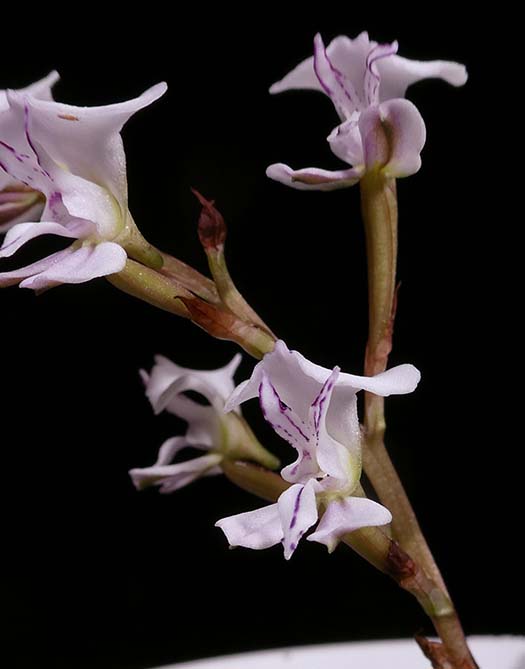 |
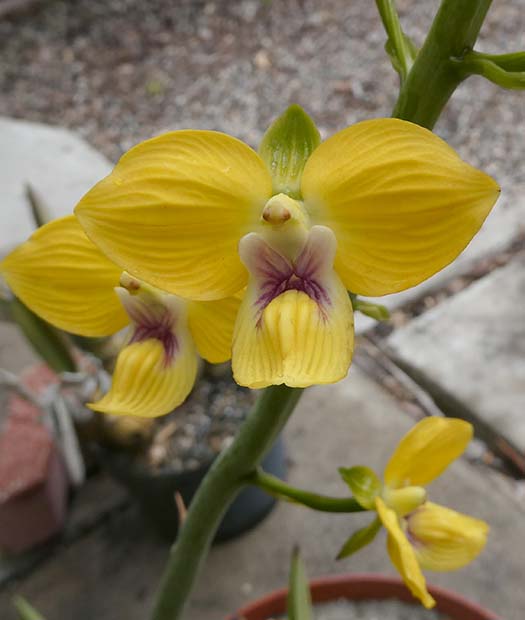
Eulophia speciosaAnother terrestrial from Africa that bloomed for Scott a full month before it bloomed for me. Last winter I didn't move it away from the sprinklers, so it got watered. And it is growing much better than in the years when dried it out. So lesson learned... it really does want winter watering. It is growing in sand. The next time I repot it, I will try adding a smal amount of organic matter. It can grow in a desert environment, but appears to not require that. |
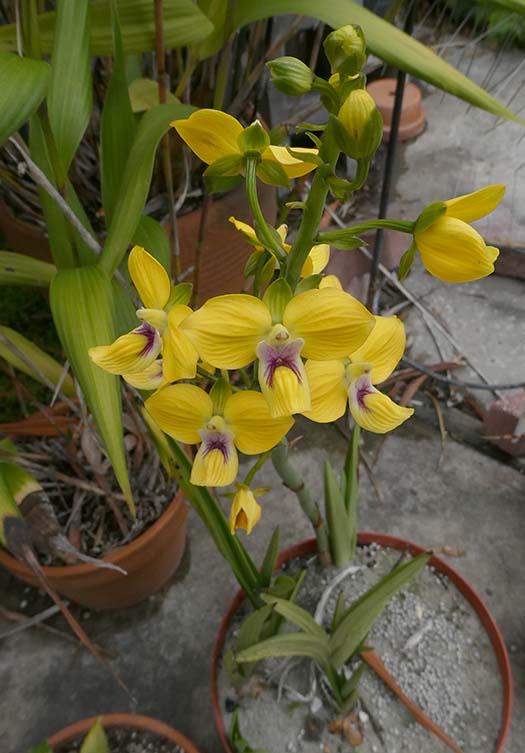 |
Epidendrum lacustre 'Wow Fireworks' AM/AOSThis is the purple form from Panama. The typical form is white and green. As a "species nut" I don't often have plants that fit award criteria, but this one did. It is very vigorous - the two photos on the right (night with flash, and natural daylight) show plants in two two-gallon pots hanging next to each other (divisions of the same plant), to make a great display. It's a beast... if it were not divided I would not be able to lift it. And it needs to hang up high, to get maximum sun to develop the color well. To quote Harry Phillips, this species wants full sun, sopping wet. The "sopping wet" part I achieve by filling the certer of the pot with sphagnum, just filling in around the edges and top with small bark. |
|
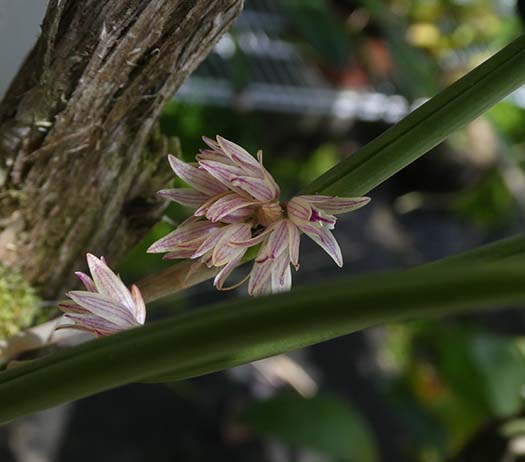
Octomeria praestansFrom southern Brazil. This species has terete leaves, and blooms from the point where the leaf emerges from the thin pseudobulb. It blooms several times a year, from that same location and a growth may continue to bloom for about 2 years.
|
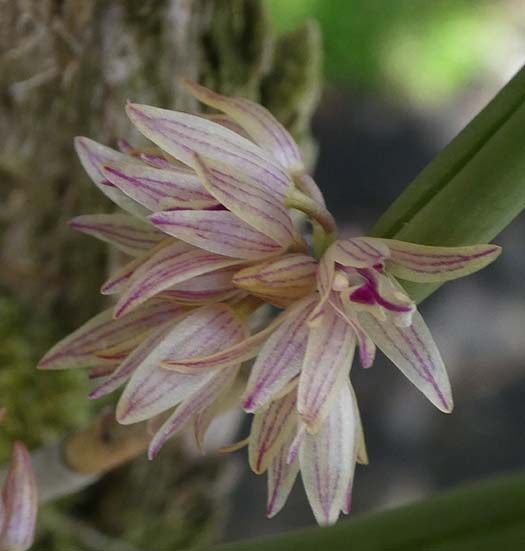 |
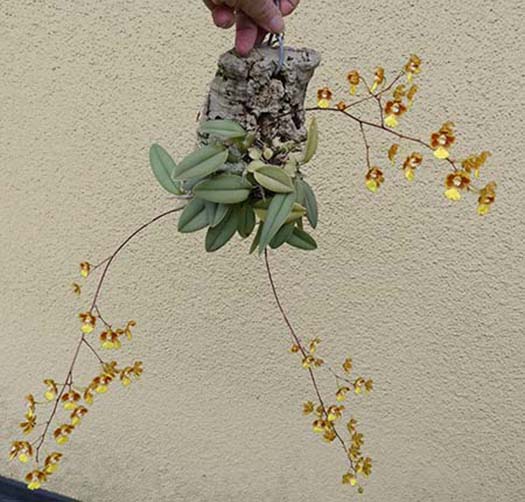 |
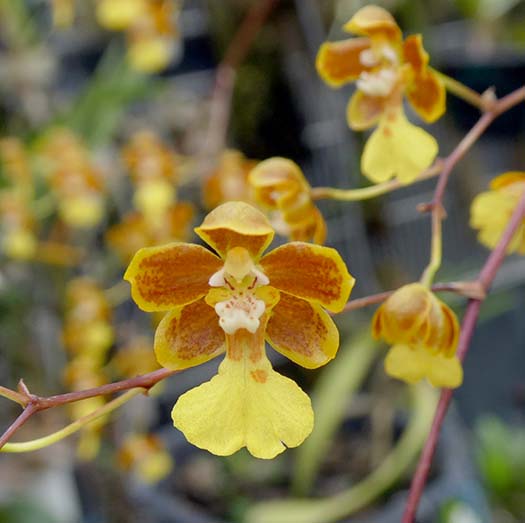 |
Oncidium harrisonianum
|
|
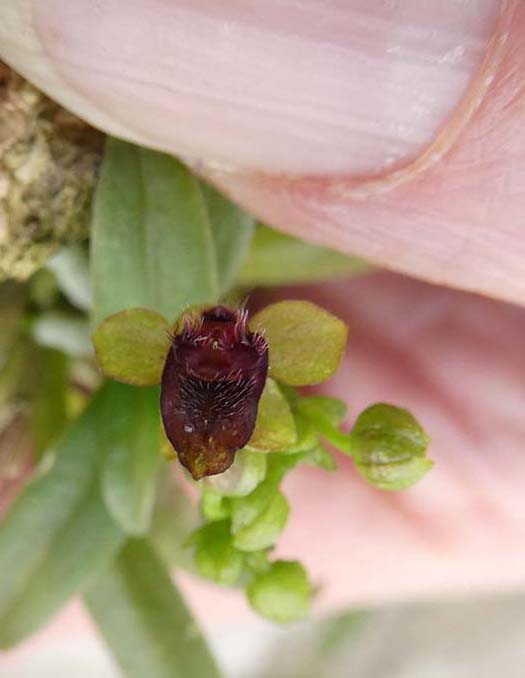 |
|
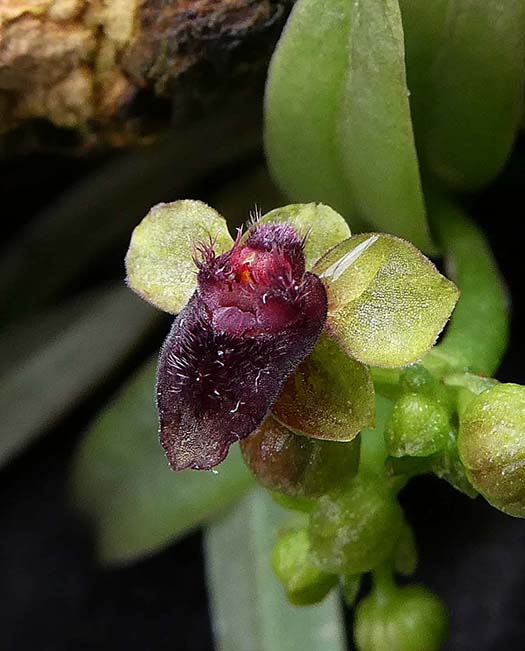 |
|
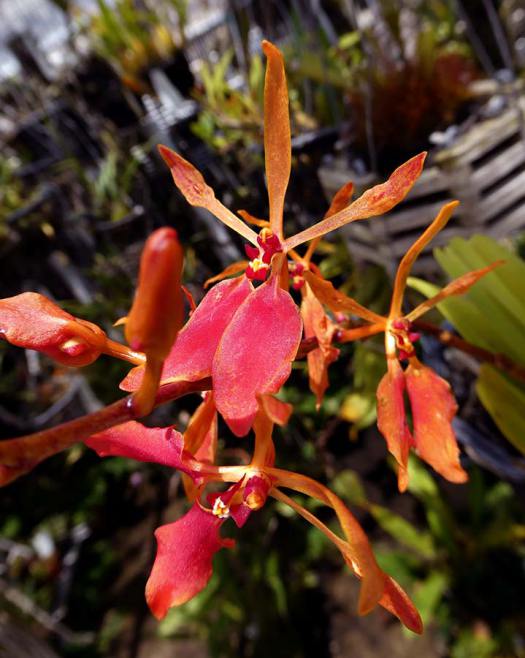 |
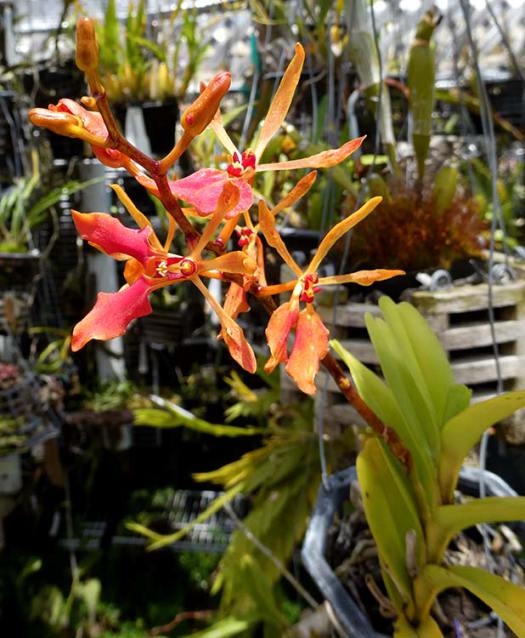 |
Renanthera pulchellaI can't find much information about this species. IOSPE has just one sentence, "Found in Myanmar as a hot growing epiphyte". However, it clearly grows over a much wider range and tolerates cold, since it has been growing and blooming on my patio for about 5 years. |
|
Masdevallia infractaThis is fairly warmth-tolerant compared to many in the genus. The flowers have heavy substance. An inflorescence can produce several flowers successively. |
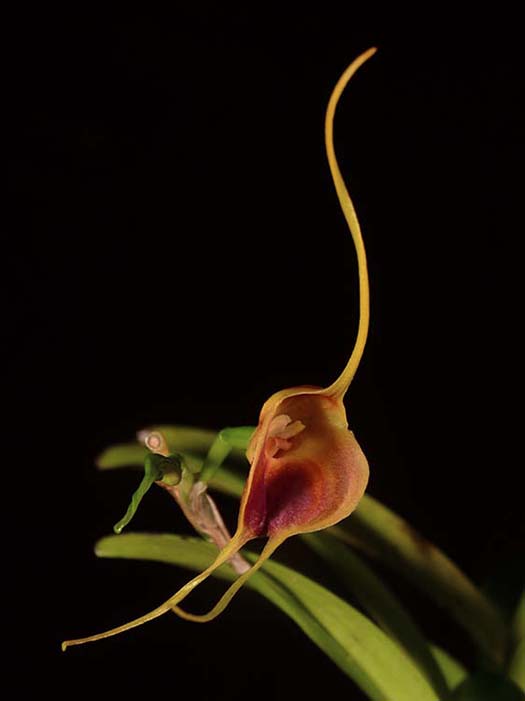 |
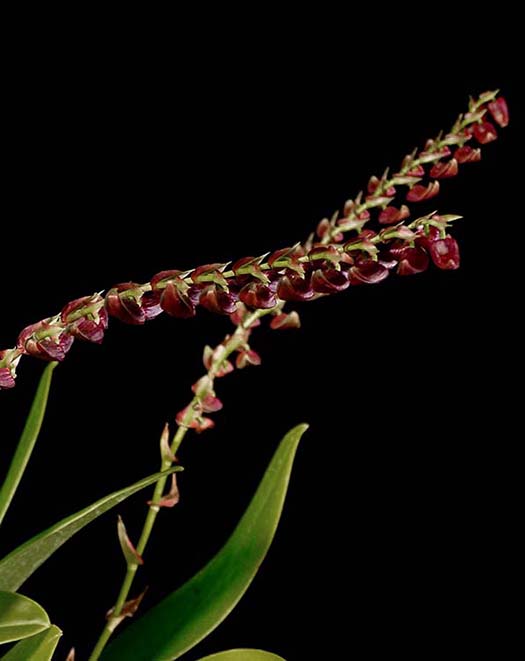
Stelis purpureaThis is how it looks during most of the day. The first time it produced buds, I wondered when they would ever open... they seemed to just sit there. |
|
In the greenhouse... |
|
Angraecum distichumEvery few months I get a flush bloom from this little gem. |
|
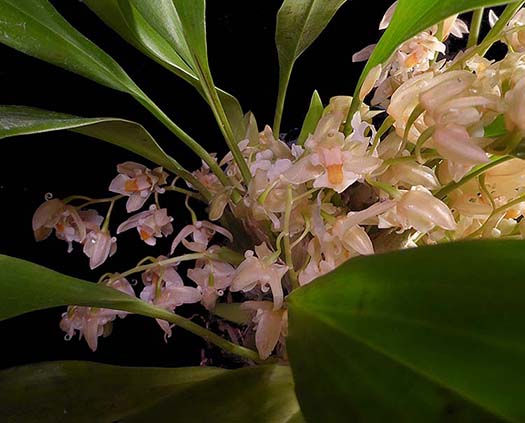
Chelonistele sulphureaClosely related to Coelogyne. Native to Sumatra, Java, and the Philippines. It grows well in the greenhouse, but the Baker culture sheet in Orchidwiz states that it can grow at high elevations as well as low. This plant will be soon moving outside so that it can acclimate. |
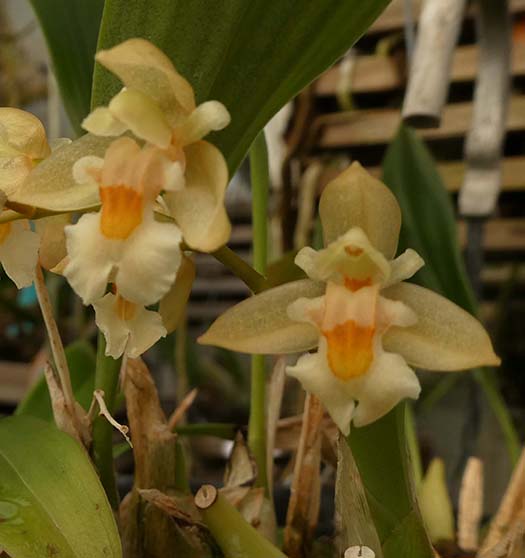 |
